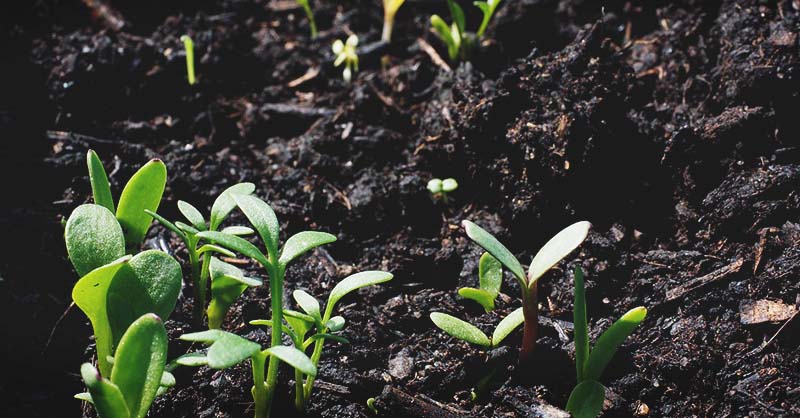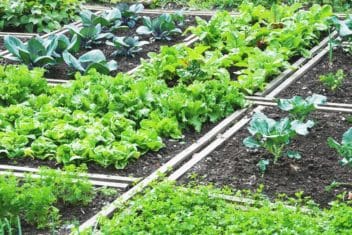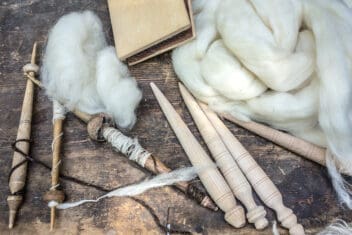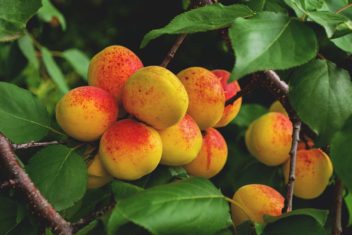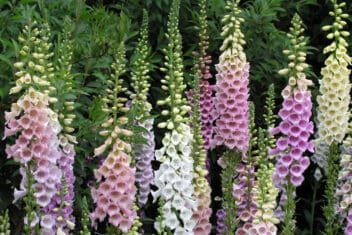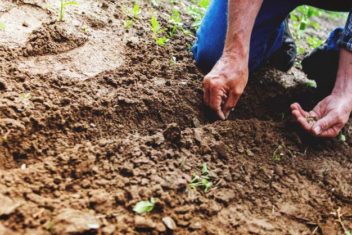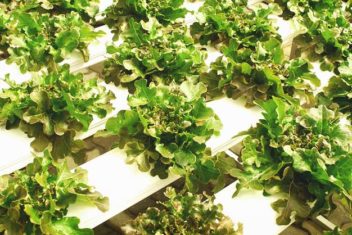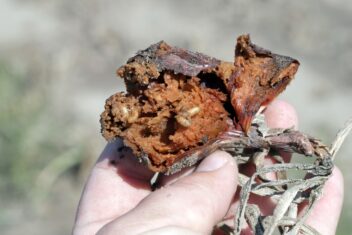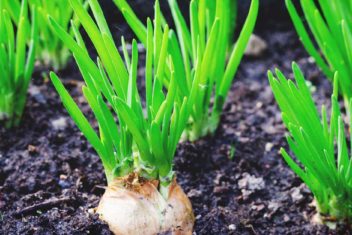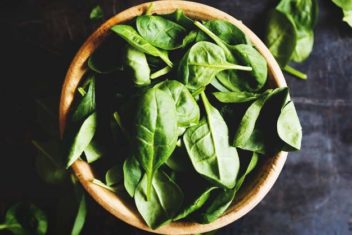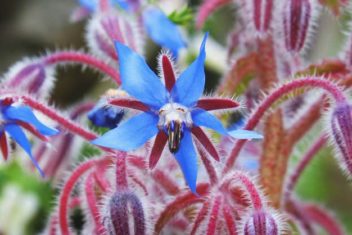Gardening can be an expensive venture, but if you know the right tricks, you can save some cash. One way to keep your money in your wallet is by learning how to make potting soil. Cost-conscious gardeners can easily make homemade potting media in large quantities using affordable material.
While we all love to save money, learning how to make potting soil also lets you control exactly what goes into your garden. You aren’t relying on manufacturers to give you the goods. Even better, making your own soil lets you adjust things based on your specific requirements. No more generic soil that may not have the things your plants need.
At first, the idea of making potting soil seemed a bit outlandish to me. All you have to do is run to your local garden store and pick up a few bags of soil. Buying soil is so easy that it felt like making it was one more thing that took up my precious time.
Turns out, when you have a large garden like I do, buying dozens of bags of potting soil costs way too much money. Making potting soil at home is a great way to save cash, and I also have a better understanding and control of the media that grows my fruits, greens, and vegetables each year.
Depending on if you purchase all of the base ingredients, you might not save a ton of money, but pennies count. Also, you can modify mixes if you have specific goals in mind. On top of that, you can change the recipe based on what plants you’re growing. What do you have to lose?
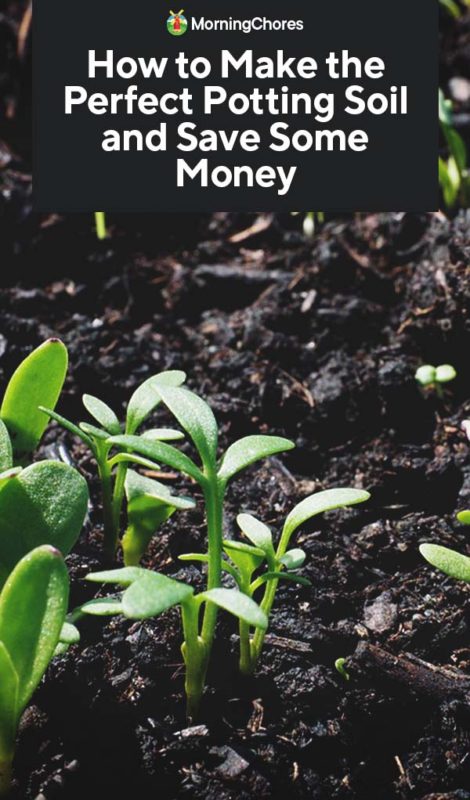
What is Potting Soil?
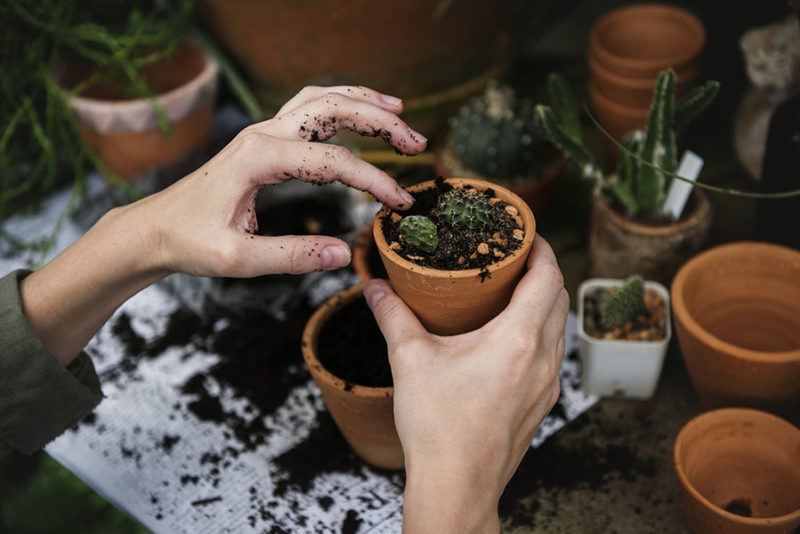
So, what is potting soil? Potting soil is often called potting mix, and it’s a blend of ingredients used to grow plants. A good potting medium stays light and won’t compact around your plant’s roots. It also provides nutrients and the right growing conditions to make your plants happy.
You can use potting soil to start seeds, for rooting cuttings, when potting up houseplants, for growing vegetables in containers, or for filling hanging baskets. Potting soil is specifically designed to help container plants thrive.
All good-quality potting mixes, including homemade potting soil, have a few things in common.
- Potting soil drains better than garden soil.
- It’s more lightweight than typical garden soil.
- It’s easy to handle.
- It contains the right mix of nutrients for most plants.
You can make many different potting soil blends, each with different textures, nutritional content, density, and more. By carefully selecting the ingredients that you use, you can address the specific needs of the plants you’re growing.
Common Potting Soil Ingredients
Gardeners can make soil-based and peat-based potting media at home by combining a variety of ingredients. You’ll be using large quantities of your primary ingredients and a smaller portion of secondary ingredients.
Sphagnum Peat Moss
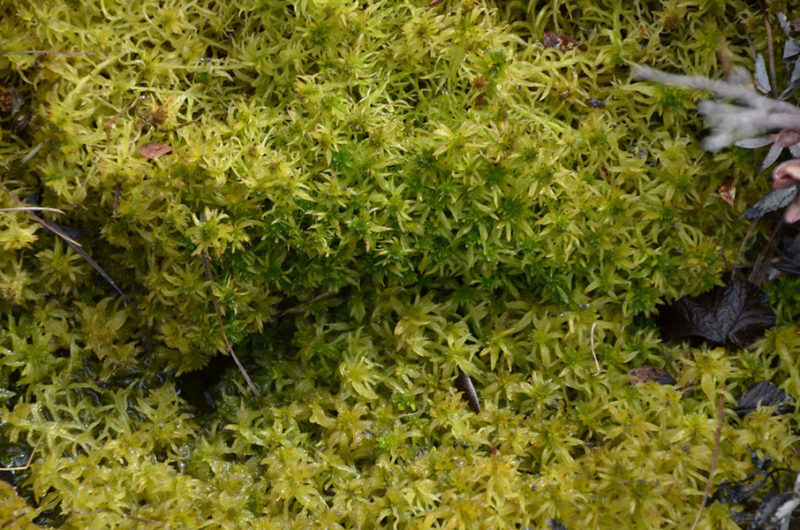
Peat moss is one of the primary ingredients for making potting soil. It has a coarse texture and creates adequate aeration while providing appropriate water-holding capacity. Using peat moss helps to ensure the mixture won’t dry out too quickly. On the other hand, adding too much sphagnum peat moss can restrict soil drainage. Note that you need to moisten it before mixing it with other ingredients.
Sterilized Soil
If you’re using soil, you’ll want to find or purchase a loamy soil and make sure it is sterilized. Most seed-starting mixes don’t use soil because it can make your potting medium heavier. Soil-based mixes are ideal for outdoor potted plants.
Coarse, Sharp, or Builder Sand
This type of sand is often used in construction, and it’s a primary ingredient in potting media. Just like peat moss, sand improves drainage and aeration, but it doesn’t improve water-holding capacity. You have to be careful not to put too much sand into containers, and sand shouldn’t be mixed into clay-based soil.
Perlite
No matter if you make peat-based or soil-based potting media, perlite can take the place of sand. Perlite is expanded volcanic rock which is heated to over 1,800℉. Perlite provides excellent drainage, but it’s lighter in weight and can hold more air than sand.
There are a few issues with perlite, specifically the price. Also, perlite tends to float to the top of the medium when watered, and it isn’t able to hold or retain water. Make sure you moisten perlite when working with it to reduce dust.
Coir Fiber
Coir fiber is the by-product of the coconut industry, and it looks and acts a lot like sphagnum peat moss in commercial and homemade potting soils. The pH level is close to neutral. It has more nutrients than peat moss and lasts even longer. It’s also a renewable recourse, unlike peat moss. The downside is that it can be expensive to purchase.
Vermiculite
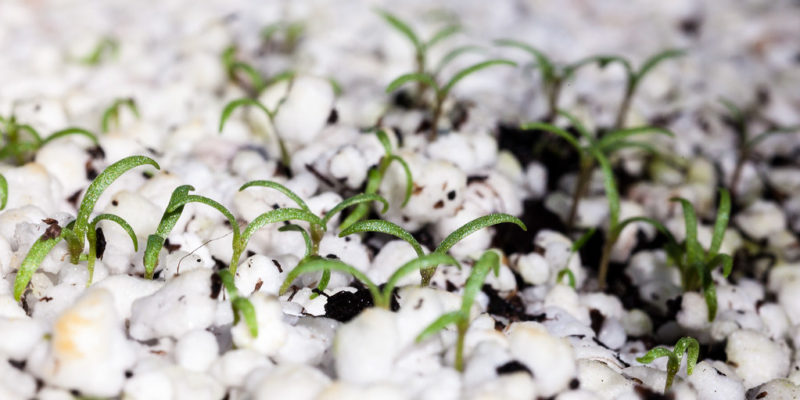
Many gardeners use vermiculite instead of perlite. It’s a clay that is naturally found in laminated flakes. The folds of vermiculite can hold water, nutrients, and air, unlike perlite. Vermiculite can easily compact, which reduces its ability to hold water and air.
Limestone
You can add pulverized calcitic limestone or dolomitic limestone to peat-based potting soils to neutralize acidity. Use about 1/4 cup of lime for every six gallons of peat moss. Limestone is readily available and inexpensive.
Compost
Compost holds billions of beneficial microbes, so it’s a great addition to DIY potting soil. You should use it in your potting soil recipes to help promote healthy plant growth. However, avoid using compost in your seed-starting recipes because it’s too heavy for young seedlings.
Fertilizers
You need to add fertilizers to peat-based potting soils because those mixes don’t contain enough nutrients to support plant growth. A good potting soil includes a natural fertilizer, animal by-product, plant materials, or manures.
How to Make Potting Soil
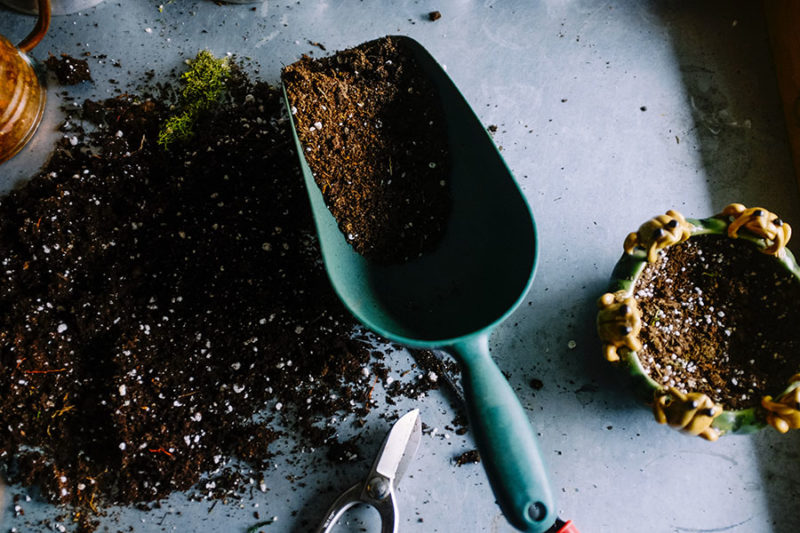
Making your potting soil blend is pretty straightforward, and it gives you more control over the growing process. If you want a container garden, you need a high-quality potting soil to help take care of the needs of your plants.
If you want to make large volumes of potting soil, use a spinning compost tumbler or a cement mixer. Trust me, your arms will thank you. You can make smaller quantities in a wheelbarrow, large bucket, or mortar mixing tub. Make sure everything is mixed thoroughly.
Let’s take a look at a few DIY potting soil recipes.
General Potting Soil Recipe
If you need a growing medium for vegetable plants, it has to be able to support the plants by holding the roots firmly. It has to fulfill the requirements of the vegetables that you’re going to grow.
- 6 gallons of sphagnum peat moss
- 6 gallons of sterilized soil
- 4.5 gallons of perlite
- 6 gallons of compost
- 1/4 cup of limestone, if you’re using peat moss
- 1 1/2 cup of a DIY container fertilizer blend or 10-10-10 fertilizer
Basic Soilless Container Mixture
- 10 quarts peat moss
- 5 quarts perlite
- 5 quarts vermiculite
- 4 quarts compost or well-rotted cow manure
- 2 cups fine sand
- 2 cups time-released fertilizer
- 1/2 cup lime, if you’re using peat moss
Seed Starting Potting Soil
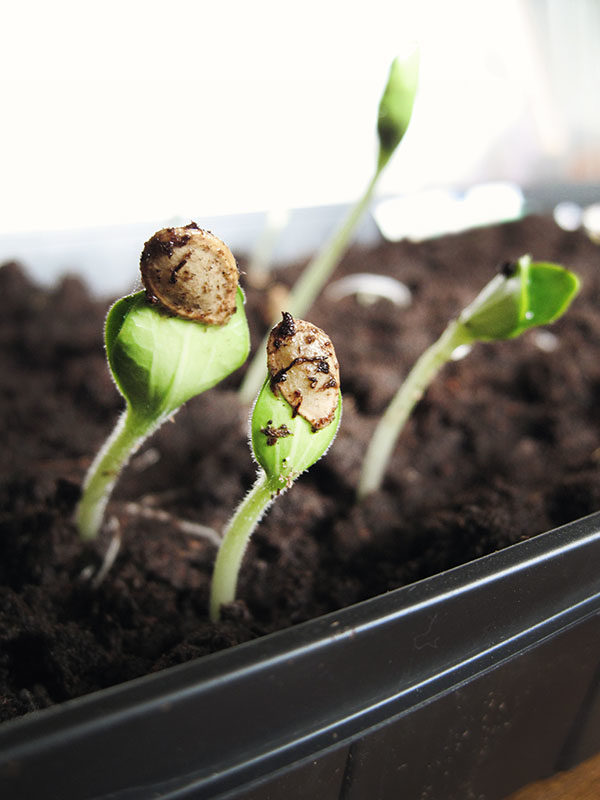
One of the reasons why seeds don’t germinate is because of improper growing mediums. You need the right medium to grow seeds. Sprouting seeds need a mix that retains moisture, which is an essential component for germination.
- 2 gallons sphagnum peat moss or coir fiber
- 2 gallons vermiculite
- 1 gallon coarse sand
- 3 Tbsp lime, if using peat moss
Potting Soil Recipe for Houseplants
You shouldn’t use regular garden soil – whether homemade or purchased -for your houseplants because garden soil doesn’t fulfill the nutrient requirements of houseplants. It also tends to compact in pots, reducing your roots’ access to water and air.
- 2 gallons sphagnum peat moss or coir fiber
- 2 gallons sterilized soil
- 1.5 gallons perlite
- 2 cups coarse sand
- 3 Tbsp lime, if using peat moss
- 2 Tbsp granular, organic fertilizer
Potting Soil Recipe for Potted Trees and Shrubs
The recipe calls for composted pine bark, but you can use other types of composted wood chips.
- 3 gallons compost
- 2.5 gallons of coarse sand
- 3 gallons sphagnum moss
- 2.5 gallons composted pine bark
- 3 gallons perlite
- 2 Tbsp limestone
- 1 cup organic, granular fertilizer
- 1/4 cup organic cottonseed meal, if growing acid-loving trees and shrubs
Tips for Making Potting Soil at Home
As you can see, the recipes aren’t complicated. All you have to do is dump the ingredients into a large container and mix. Here are some tips to consider, as well.
- When you’re making potting soil, the lighter it is, the better it is for you. You want a loose, porous mixture that not only makes a container lighter to move, but it also helps to transport water, fertilizer, and air to plant roots.
- Start with a basic recipe, and you can add soil sulfur to lower the pH level or lime to increase the pH level. Both of these additives can be found at local garden centers.
- If your recipe is sticky, add perlite, coarse sand, or its alternatives. If the recipe is too gritty or sandy, mix in a bit of coir or peat moss.
- Remember, if you’re growing vegetables, the medium has to be able to retain moisture, so increase the ingredients slightly. For succulents, do the opposite.
- Plants such as annual flowers, tomatoes, eggplants, peppers, and cabbage family crops are heavy feeder crops. Green beans, greens, and herbs are moderate feeders, and root crops are light feeders. Add fertilizer accordingly.

